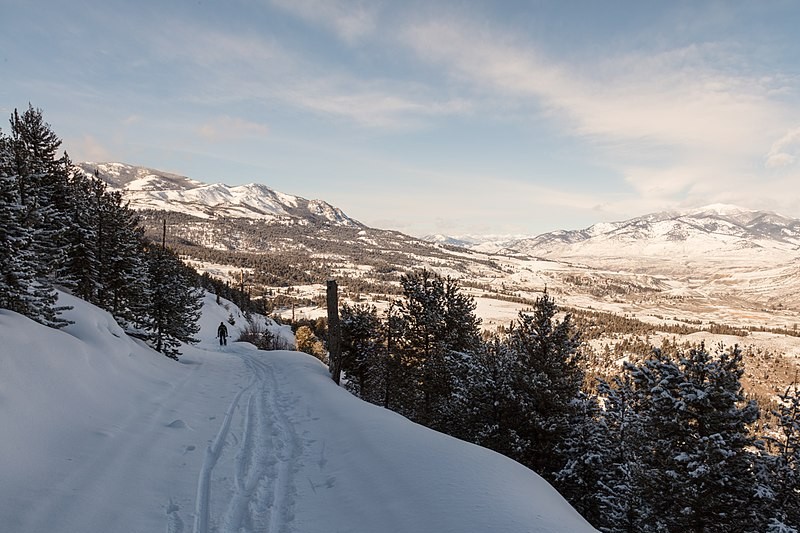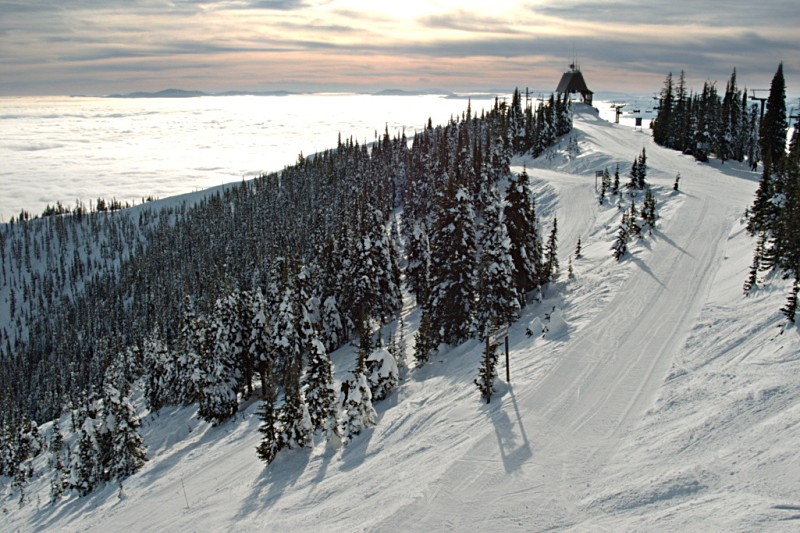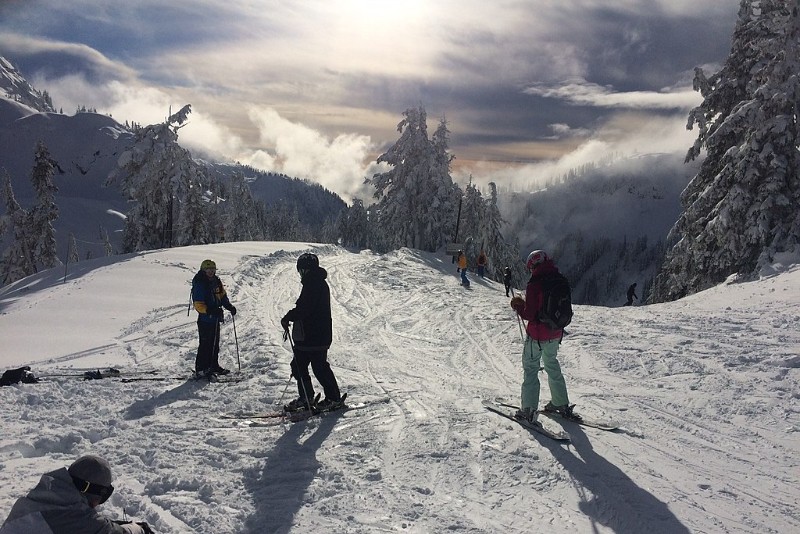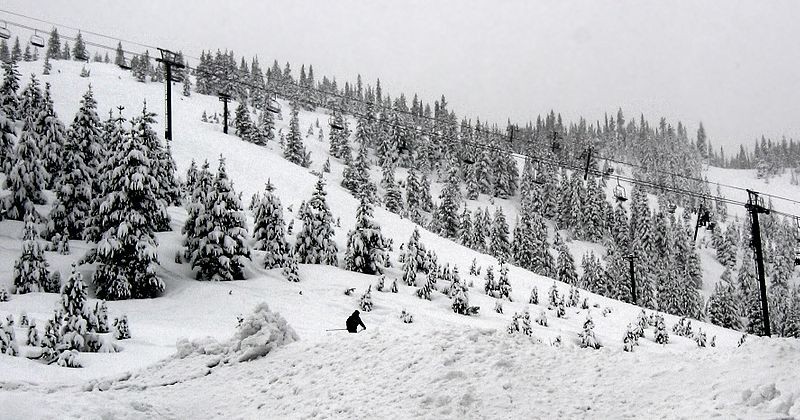If Instagram is a way measure to the cultural zeitgeist, the #VanLife movement has been having a moment. A significant number of Americans are embracing a semi-nomadic lifestyle — at least temporarily, and hitting the road to seek out life-list destinations, under-the-radar spots, and outdoor adventures.
Of course, there are perks to road-tripping in a van or RV — you can travel on a budget, with the freedom and flexibility to spend extra time in jaw-dropping locations and bring pets along on the open road. And, the proliferation of do-it-your (DIY) van conversion tips and videos on social media platforms like YouTube has made it easy to reimagine the potential of budget-friendly, secondhand vehicles.

Still, buying an RV or converting a van is a big expense — and can also be a serious time commitment. Fortunately, these days it is easy to get a taste of the #VanLife with a rental vehicle. For instance, there’s Outdoorsy. The world’s largest online RV rental marketplace, the easy-to-navigate platform connects renters with RV and van owners in more than 4,800 cities in 11 different countries. With more than 25,000 vehicles, including everything from classic Airstream trailers to cozy campervans, it’s possible to find an adventure-worthy vessel to suit any budget or itinerary. Beyond vehicle type, travelers can also search for an RV or van equipped for cold-weather adventures, with amenities like heaters and induction stoves. And, for winter road-trippers, Outdoorsy also provides a little extra peace of mind, offering travelers a range of insurance options, along with round-the-clock roadside assistance and live customer support — and there’s even a personal concierge service offering travel assistance, including advice on finding RV-friendly campgrounds, local restaurants, or emergency services.
How to Choose an Adventure-Worthy Vehicle
With the abundance of options, including both drivable and towable RVs, choosing the right adventure vehicle is a big decision — especially for first-time RV drivers. And, road-tripping during the winter brings an additional set of seasonal challenges to consider — namely, the potential for gnarly road conditions generated by snow and ice. When choosing a vehicle for winter travel, look for a rig equipped to handle all-season adventures – and in particular, pay attention to features like tires and insulation.
A few of the popular options for #VanLife road-trippers include:
- Class A Motorhomes: These spacious behemoths are loaded with creature comforts, but they’re also about the size of a bus – which means they can be challenging to park and harder to handle on narrow backroads – especially if navigating patches of snow and ice.
- Class B Motorhomes: Also commonly referred to as campervans (just imagine the classic Volkswagen microbus), these cozy rides come with a more barebones interior – sometimes not much more than a bed and some shelving for storage. But, the smaller size means campervans are easier to drive and park in compact camping spots – another added bonus, some models are also equipped with four-wheel drive.
- Class C Motorhomes: More similar to driving a standard pick-up truck, these motorhomes feature a little more space and a few more trappings than a standard campervan – often including a bathroom and kitchen area.
- Travel Trailer: There’s a wide variety of towable trailers currently on the market, but more for far-flung destinations, compact pop-up trailers are among the easiest to tow, and can usually be hauled by the average SUV. Another bonus, pop-trailers can also be unhitched and left at camp, for adventures that involve seeking out hard-to-reach trails or backcountry spots. However, pop-up trailers also typically offer little protection from the elements — meaning they’re on par with sleeping in the standard three-season tent
Tips for Winter Road Trips
The reality of road-tripping during the ski season means having to contend with winter weather, namely, being prepared for potentially hazardous road conditions, and staying comfortable in an RV or van in chilly conditions. So there are first things to consider:
- First things first, be prepared for snow and ice either on the road or at camp with the basics — a sturdy snow shovel, ice scraper, and chemical de-icer for locks.
- Pay attention to vehicle size specifications when route planning in order to anticipate any issues with height or size restrictions in tunnels, on bridges, toll roads, or at campgrounds.
- Plan for navigational apps and smartphones to fail at some point, so have to back-up strategy — like an old-fashioned paper map or road atlas, just in case extreme weather forces last-minute route changes.
- Even in a van or RV outfitted with a heater, be ready for any weather extremes or unexpected equipment failure with sleeping bags designed for winter temperatures.
- Try to stick to meals with minimal prep and clean-up, and consider packing a compact backpacking stove for a quick cup of coffee first thing in the morning or a piping mug of tea at bedtime.
- Think about adding extra insulation to windows for winter campouts. Simple, removable, DIY window covers affixed with magnets and made with insulation materials like basic plastic bubble wrap or 3M Thinsulate fabric can help boost interior temperatures — and don’t require a complicated installation process.
Where to Hit the Slopes
The popularity of #VanLife ethos continues to flourish, more and more outdoor hubs are catering to van and RV campers — including some of the country’s most spectacular ski areas. Even better, with accommodation options for van and RV campers beginning around $20 per night, road-tripping is an affordable way to cobble together the ultimate ‘Endless Winter’ adventure — or just spend a few days hitting the slopes. Here are a few of the best places in the country to camp out slopeside:
Whitefish Mountain Resort, Montana

Stashed away in the northern Rockies, just 25 miles east of Glacier National Park, northwestern Montana’s Whitefish Mountain Resort has been luring skiers for more than seven decades, since the first T-Bar opened in the winter of 1947. Today, the resort features more than 3,000 acres to ski, with 111 marked trails, and a maximum elevation of 6,817 feet, providing a postcard-worthy view of the Flathead National Forest. Beyond the skiing, the resort features hiking and biking during the summer, along with the Summit Nature Center, featuring exhibits on the region’s wildlife and ecology. The resort also caters to van-life nomads with camping for RVs and trailers for $15 per day (with a maximum stay of three days), on a first-come, first-served basis.
Mount Hood Meadows, Oregon

Just a 90-minute drive from Portland, the slopes at Oregon’s Mount Hood Meadows is an easy winter escape. Situated in the Mount Hood National Forest, the resort offers 2,150 acres to ski, spread over the southeastern side of 11,239 foot Mount Hood. With an elevation topping out at 7,300 feet, the resort treats skiers to celestial alpine views, along with a diversity of terrain, including plenty of easy-to-cruise slopes for beginner and intermediate skiers, gate-accessible Double Black Diamonds for seasoned pros, and 140 acres open for night skiing. And, for #VanLifers and RV road-trippers visiting during the winter, the resort offers 14 overnight RV spaces (without hookups or camper facilities) in the designated Sunrise Lot — available first-come, first-served, and free of charge (with a valid Oregon Sno-Park permit, required from November 1 through April 30). Campers are permitted to stay for a maximum of three consecutive nights within any five-night period.
Mount Baker Ski Area, Washington

In northern Washington, just 30 miles from the town of Bellingham, the Mt. Baker Ski Area stuns with heady views of 9,131 foot Mount Shuksan. The resort spreads over 1,000 acres of the North Cascades in the Mt. Baker-Snoqualmie National Forest, reaching an elevation of 5,089 feet. The resort banks more than 660 inches of annual snowfall, guaranteeing plenty of perfect powder — and in 1998-1999, the Mt. Baker Ski Area set the world record for total snowfall in a single ski season, with a jaw-dropping 1,140 inches. And, the ski area also offers accommodations for van and RV aficionados, with overnight camping spots available in the Heather Meadows and White Salmon lots from Opening Day until April 23. Although there are restroom facilities available round-the-clock in both overnight parking lots, it’s primitive
Read more: 13 Tips for Beginners and First-Times Skiers
Mt. Bachelor, Oregon

Situated just 25 miles west of the town of Bend, Mt. Bachelor is the sixth largest ski area in the country, with a smorgasbord of 4,318 skiable acres — located entirely in the Deschutes National Forest in Oregon’s Central Cascades. With 101 runs and an elevation that tops out at 9,065, the resort has something for skiers of all skill levels, along with a season that extends all the way from Thanksgiving to Memorial Day Weekend. For van and RV campers, the resort offers overnight RV parking with 24-hour facilities, including showers. Spots with an electrical hookup are available for $50 to $60 per night, while non-powered spots are $20 per night (and all can be reserved online). The resort has also celebrated #VanLife culture with the five-day RendezVan, a family-friendly spring campout catering to skiers and outdoor lovers with live music, local beer, and food vendors.
Grand Targhee Resort, Wyoming
Spread along the western flanks of the Tetons in the Caribou-Targhee National Forest, Wyoming’s Grand Targhee Resort spoils skiers with 2,602 acres to explore — and a breathtaking backdrop. The resort banks more than 500 inches of annual snowfall, and offers a diversity of mountain experiences — including the only cat skiing operation in the state, providing access to 602 acres of pillowy powder. And, for a break from the slopes, there are groomed trails for Nordic skiing, snowshoeing, and fat biking. The resort also offers overnight parking for self-contained vans and RVs, with dry campsites from $28 to $38 per night, and sites with electrical hook-ups for $40 to $50. Best of all, the campsites also provide easy access to the resort’s fat biking and snowshoeing trails, so it’s easy to maximize time spent outdoors savoring the winter wonderland.
Hoodoo Ski Area, Oregon

Straddling the summit of Santiam Pass in the Cascade range in central Oregon, about 45 miles west of the town of Bend, Hoodoo Ski Area dishes up more than 800 skiable acres, blanketed by 450 inches of annual snowfall, with a peak elevation of 5,703 feet. More than half of the resort’s 34 runs cater to beginner and intermediate skiers, making the ski area ideal for less seasoned skiers. And, 23 of the ski area’s runs have been outfitted with custom lighting for night skiing. Besides the downhill offerings, the resorts also feature groomed trails for Nordic skiing, and a massive tubing park, ideal for lazy rest days. For road-trippers, there are 32 RV sites (from $45 to $65 per night, depending on size), and during winter, they all have electrical hook-ups. Situated near the lodge, campers in the RV sites also have access to 24-hour facilities, including restrooms and hot showers.
Read more: What is Après Ski? A Quick Guide to Post-Skiing Fun



